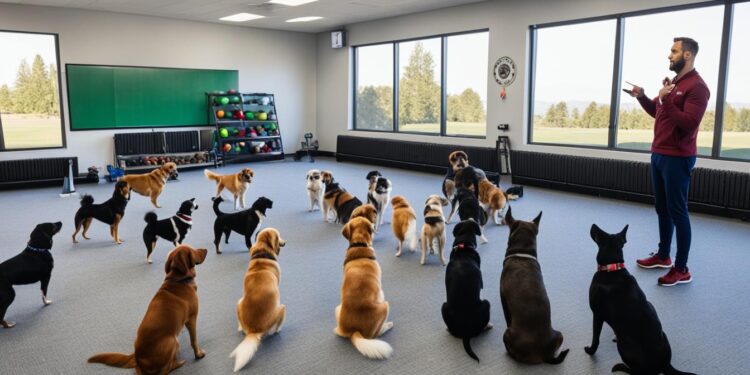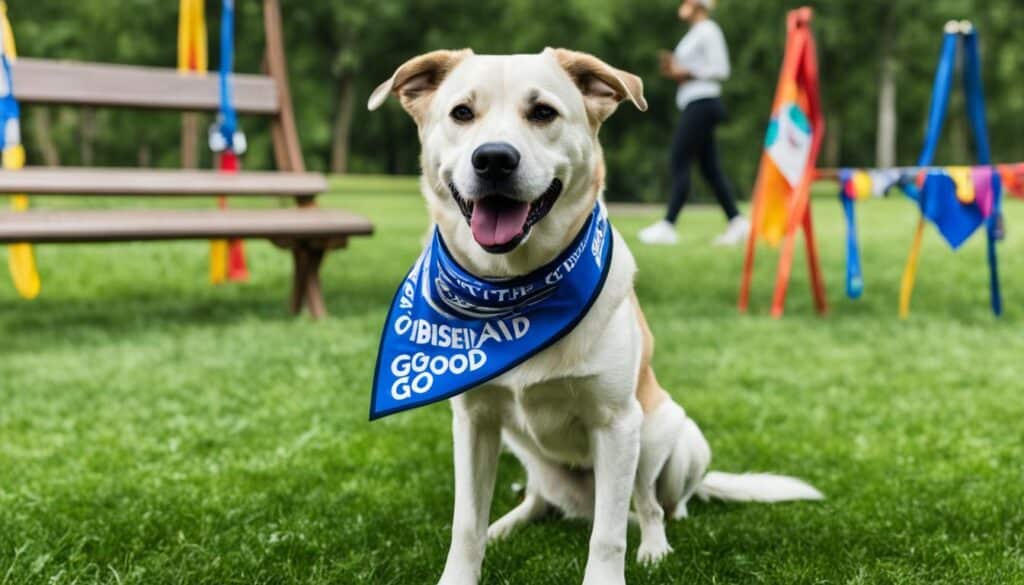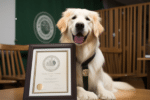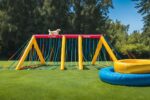Choosing the Right Dog Training Class for Your Pet

When it comes to training your dog, finding the right class is essential. With the plethora of options available, it can be overwhelming to choose. However, by evaluating potential trainers and considering your dog’s specific needs, you can make an informed decision.
It’s important to look for trainers who use positive reinforcement methods and have experience in the industry. Additionally, determining whether group classes or private training would best suit your dog’s learning style is crucial.
Doing thorough research and finding a trainer who aligns with your preferences and requirements will ensure a successful training experience for you and your pet.
What to Look For in a Dog Trainer
When selecting a dog trainer, it’s important to consider several factors to ensure that you find the right fit for you and your furry friend. Here are some key aspects to look for:
- Methods and Training Philosophy: Inquire about the trainer’s methods and training philosophy. It is recommended to choose a trainer who utilizes positive reinforcement techniques. Positive reinforcement training involves rewarding desired behavior and teaching alternative behaviors rather than resorting to punishment. This approach is based on scientific principles of animal learning and has proven to be effective in strengthening the bond between dogs and their owners.
- Understanding Your Dog’s Needs: Different dogs have different learning styles and needs. Consider whether a trainer’s services align with your dog’s specific requirements. Some trainers offer group classes, which provide opportunities for socialization and distraction training, while others specialize in one-on-one sessions. Understanding your dog’s needs will help you determine which type of training environment will be most beneficial.
- Qualifications and Expertise: It’s essential to evaluate a trainer’s qualifications, including their education, credentials, and certifications. Look for trainers who have received formal training in dog behavior and training methodologies. Certifications from reputable organizations like the Certification Council for Professional Dog Trainers (CCPDT) can provide assurance of a trainer’s expertise.
- Personality and Teaching Style: The trainer’s personality and teaching style can greatly impact your training experience. Choose a trainer who makes you feel comfortable and supported throughout the process. A trainer who is patient, encouraging, and adaptable to different dogs and owners will create a positive learning environment.
By considering these factors, you can find a dog trainer who utilizes positive reinforcement training methods and meets the specific needs of you and your dog. This will ensure a productive and enjoyable training experience as you work towards developing a well-behaved and happy canine companion.
Finding a Trainer
Now that you have established the criteria for your ideal dog trainer, it’s time to begin your search. Recommendations from trusted sources such as veterinarians, groomers, or friends with well-trained dogs can be invaluable in finding a reputable trainer. Another valuable resource is the American Kennel Club (AKC), which provides a list of approved Canine Good Citizen (CGC) evaluators who have met specific criteria for training excellence. Additionally, websites and directories of professional dog training associations like the Certification Council of Professional Dog Trainers and The Association of Professional Dog Trainers can assist in finding qualified trainers in your area.
Before committing to a trainer, it is advisable to observe a class or training session to ensure that their teaching style and approach align with your expectations and the needs of your dog. Taking this step allows you to see firsthand how the trainer interacts with both dogs and owners, providing insight into their effectiveness and compatibility with your training goals.
Recommended Resources:
- Veterinarians
- Groomers
- Friends with well-trained dogs
AKC CGC Evaluators: Find the complete list here.
Professional Dog Training Associations:
| Association | Website |
|---|---|
| Certification Council of Professional Dog Trainers | https://www.ccpdt.org/ |
| The Association of Professional Dog Trainers | https://apdt.com/ |
By utilizing these resources and conducting thorough research, you can find a dog trainer who possesses the necessary skills, experience, and positive training methods to effectively guide you and your dog on the path to success.
What to Expect from Training Classes
Enrolling your dog in a training class offers numerous benefits. These classes not only teach basic obedience skills but also help develop good manners in public and strengthen the bond between you and your pet.
In a well-designed dog training class, you can expect to learn foundational behaviors such as:
- sit
- stay
- down
- come
- leave it
- loose-leash walking
Trainers often address common issues like house-training, nipping, and jumping, providing valuable guidance to overcome these challenges.
Moreover, training classes provide the opportunity for your dog to socialize with other dogs and new people, promoting positive interactions and proper behavior in various environments. This socialization helps them become well-adjusted and confident.
Additionally, reputable trainers incorporate education about dog behavior, communication, and learning into their classes. This ensures a comprehensive training experience for both you and your dog, empowering you to understand your dog’s needs and train them effectively.
Advancing Your Training Journey
Once your puppy has completed a basic training class, the learning journey doesn’t stop. Puppy kindergarten classes are a great way to socialize your puppy and continue building foundational skills. These classes typically cover basic behaviors and address common puppy issues such as house-training, nipping, and jumping.
As your dog matures, you may consider enrolling them in more advanced obedience training classes. These classes reinforce the skills learned in puppy kindergarten and provide guidance for tackling the challenges of adolescence.
Additionally, ongoing training throughout your dog’s life helps keep them mentally sharp and allows you to address specific situations or participate in fun activities like dog sports, therapy dog visits, and tricks and games. Training classes should be viewed as an opportunity for lifelong learning and continued growth.
Continuing the Learning Path with Puppy Kindergarten
After completing a basic training class, transitioning to a puppy kindergarten program is a natural next step. These classes not only offer socialization opportunities for your puppy but also continue to nurture and reinforce foundational skills. In puppy kindergarten, your furry friend will learn essential commands like sit, stay, and come, as well as crucial puppy skills such as potty training and bite inhibition.
Puppy kindergarten classes often involve interactive play, engaging exercises, and positive reinforcement techniques to build your puppy’s confidence and promote good behavior. With a focus on early development and proper socialization, puppy kindergarten lays a solid groundwork for your dog’s continued obedience training journey.
Embracing Obedience Training for a Well-Behaved Dog
As your dog grows older, it’s important to continue advancing their training by enrolling them in obedience classes. Obedience training provides structured learning experiences that strengthen your dog’s ability to follow commands and exhibit good manners in various situations.
Obedience classes typically focus on refining basic commands and introducing more advanced behaviors. By participating in obedience training, your dog will learn to walk politely on a leash, ignore distractions, and respond reliably to your cues. The guidance and expertise offered in these classes ensure that your dog becomes a well-behaved and obedient companion.
Continual Learning for Lifelong Development
Training your dog shouldn’t be limited to specific classes or certain phases of their life. Lifelong learning is beneficial for both you and your canine companion. Ongoing training keeps your dog mentally stimulated, helps prevent behavior problems, and strengthens the bond between you.
Throughout your dog’s life, consider participating in advanced training courses that focus on specific skills, such as agility or therapy dog work, as well as fun and interactive activities like tricks and games. These experiences provide mental and physical challenges for your dog, promote their overall well-being, and allow you to explore new avenues of shared enjoyment.
Remember, training is not just about teaching your dog new skills but also about fostering a lifelong love of learning and growth. Embrace the opportunities that training classes offer and embark on a continuous journey of education and development with your furry friend.
Specialized Training Classes
Beyond basic obedience training, specialized training classes offer opportunities to enhance your dog’s skills and engage in specific activities. These classes cater to different interests and goals, allowing you and your canine companion to explore new horizons. Whether you’re looking to improve your dog’s behavior in public settings, prepare them for therapy work, or participate in exciting dog sports, there is a specialized training class for you.
Canine Good Citizen (CGC) Classes

Therapy Dog Classes
Therapy dog classes prepare dogs for visits to facilities such as nursing homes, hospitals, and schools. These classes focus on teaching your dog proper behavior and obedience in various environments, ensuring that they can provide comfort and support to those in need.
Dog Sports Classes
Dog sports classes offer a range of activities that allow your dog to channel their energy and intelligence into structured exercises. From agility and herding to nose work and tracking, these classes provide mental and physical stimulation while fostering a stronger bond between you and your dog.
Other specialized classes may focus on handling small dogs, participating in human sports like paddleboarding or running, or addressing specific situations like preparing for the arrival of a new baby. These classes offer a chance for you and your dog to learn and grow together, strengthening the unique connection you share.
Tips for Choosing the Right Training Class
When selecting a training class, there are a few additional factors to consider. Pay attention to the trainer’s style and teaching methods during class observations. Look for trainers who engage with all participants, adapt their techniques to different learning styles, and create a positive and enjoyable learning environment.
Trainer Style and Teaching Methods
Observing the trainer’s style and teaching methods can give you valuable insights into their approach. A trainer who uses positive reinforcement techniques, such as rewards and praise, is often more effective in motivating and encouraging dogs to learn. Additionally, trainers who are patient, empathetic, and understanding are better equipped to address various learning challenges effectively.
“A skilled trainer will tailor their methods to each individual dog, taking into account their personality, energy level, and specific training needs. They will create a welcoming and supportive environment that fosters a positive learning experience for both you and your dog.”
Avoid trainers who rely on harsh techniques or punishment-based methods, as these can lead to fear, anxiety, and aggression in dogs.
Class Size
The size of the training class can significantly impact the learning experience for your dog. Larger classes may result in less individual attention, making it harder for the trainer to address specific challenges or provide personalized guidance. On the other hand, smaller classes typically offer a more personalized experience, allowing the trainer to focus on each dog’s unique needs. Consider your dog’s temperament and any specific challenges they may have when deciding on the ideal class size for their training.
Word of Mouth Recommendations
When searching for the right training class, word of mouth recommendations can be invaluable. Reach out to trusted professionals such as veterinarians and groomers who may have insights into reputable trainers in your area. Additionally, seek recommendations from friends or family members who have had positive experiences with training classes for their dogs. Hearing about others’ experiences can give you a sense of the trainer’s expertise, teaching style, and the overall effectiveness of the class.
Summary
Choosing the right training class for your dog requires careful consideration of the trainer’s style and teaching methods, class size, and word of mouth recommendations. By prioritizing these factors, you can select a class that aligns with your dog’s learning needs and ensures a positive and enjoyable training experience.
Conclusion
Choosing the right dog training class is an essential step in providing your pet with the education they need and building a strong bond between you and your furry friend. By carefully evaluating potential trainers, considering your dog’s unique needs, and observing classes before enrolling, you can confidently select a training class that suits both you and your dog.
Training classes not only provide a foundation for teaching your dog basic obedience skills, but they also play a crucial role in promoting socialization and instilling good manners in public. Additionally, these classes offer opportunities for specialized training, allowing your dog to develop advanced skills and engage in activities such as dog sports.
It’s important to remember that training is a lifelong journey. By investing in the right training class, you provide your dog with ongoing learning opportunities that contribute to their overall well-being. Whether you choose a puppy kindergarten, basic obedience class, or specialized training, you are empowering your dog with the skills they need for a happy and fulfilling life.
FAQ
Why is choosing the right dog training class important?
Choosing the right dog training class is important because it ensures that your pet receives the proper education and instruction to develop good manners and obedience skills.
What should I look for in a dog trainer?
When selecting a dog trainer, it’s important to look for someone who utilizes positive reinforcement methods and has experience in the industry.
How can I find a trainer for my dog?
You can find a trainer for your dog by seeking recommendations from trusted sources such as veterinarians, groomers, or friends with well-trained dogs. You can also consult websites and directories of professional dog training associations.
What can I expect from training classes?
In training classes, you can expect to learn basic obedience skills, address common issues, and have the opportunity for your dog to socialize with other dogs and new people.
What should I do after completing a basic training class?
After completing a basic training class, you can continue your dog’s education by enrolling them in puppy kindergarten classes or more advanced obedience training classes to further develop their skills.
Are there specialized training classes available?
Yes, there are specialized training classes such as Canine Good Citizen (CGC) classes, therapy dog classes, and dog sports classes that focus on specific skills and activities.
What factors should I consider when choosing a training class?
When choosing a training class, you should consider the trainer’s style and teaching methods, the class size, and seek word of mouth recommendations from trusted professionals.






